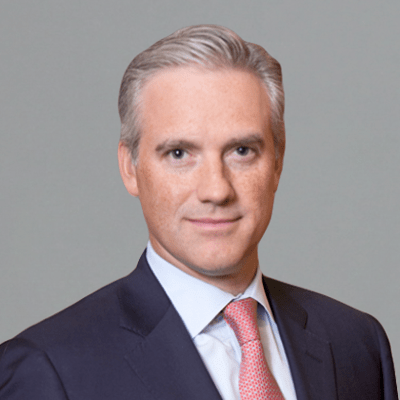As concerns around climate change grow and governments and other groups seek to address it—in addition to our affordable housing shortage, clean water projects, and education and health care financing needs—the municipal bond market can play an important role in helping fund highly impactful environmental and social projects.
The theme for this year’s Earth Day was “Invest in our Planet”—a global call to deploy capital toward climate solutions. As the website explains, “Through regulations, incentives, and public-private partnerships, governments hold the key to transform and build the green economy.” In addition, the 2023 Intergovernmental Panel on Climate Change (IPCC) report—the culmination of years of work by hundreds of scientists that began in 2015—outlines the increasingly urgent need to mitigate the worst impacts of climate change. The report focuses on the critical need for action by leaders around the world, at all levels of government, and across all industrial sectors. We’ve reached 1.1 degrees Celsius of warming above preindustrial temperatures, along with more frequent and extreme weather events that continue to affect people globally.
With the 2015 Paris Agreement’s goal of limiting global warming to 1.5 degrees Celsius in mind, the report also examines climate-adaptive development. To mitigate the physical risks of climate change, significant financial investment in climate adaptation is needed. Here’s where the municipal bond market comes in.
What makes municipal bonds an impact market?
We could consider the municipal bond market the original impact market because of its natural alignment with many societal and community benefits. The sustainable bond market is a growing niche within the municipal market, with an increasing percentage of sustainable-labeled debt issued on a year-over-year basis. The markets label these bonds as green, social, or sustainable to highlight the environmental or social purpose of their use of proceeds. The municipal bond market includes many bonds issued without a sustainable bond label that have a clear environmental or societal purpose, which we call unlabeled ESG bonds. With a holistic approach to responsible investing research, investors can uncover these unlabeled bonds for investment vehicles with an impact focus and expand the investable universe for these strategies.
The Commonwealth of Massachusetts issued the first green municipal bond in 2013, and green bonds—which include a use-of-proceeds provision to finance environmental or climate-focused projects—have played a role in the municipal bond market ever since. The market has grown significantly since 2013, with $16 billion in total green bond issuance in the municipal market in 2022. Sectors with the largest amount of green issuance include clean energy, land conservation, sustainable waste, sustainable buildings, mass transit, and clean water. Recent green issues include one in Indiana to improve the quality of drinking water and reduce water pollution in the state’s water supply in compliance with the Water Quality Act and the Safe Drinking Water Act. The Metropolitan Area Transit Authority in Washington, DC, issued another climate-certified bond to increase the public transit system’s energy efficiency. We expect issuance of green bonds to grow alongside climate-focused legislation and climate pledges set by federal, state, and local governments.
Many climate-focused projects come to market with a green bond label to indicate an environmental and climate-focused use of proceeds. There’s no standard for labeling green bonds, however, and issuers might self-label bonds as green or include a second-party opinion to verify the green label. This lack of standardization highlights the importance of investors choosing a manager with a comprehensive research framework to uncover any potential greenwashing or misleading environmental claims by an issuer. As interest in impact investing grows, there’s increasing demand for investments that demonstrate a positive impact on the environment and communities.
Social bonds have also been growing as a proportion of overall municipal bond issuance in recent years. Affordable housing is the largest sector of social-bond-labeled issuance in the municipal market. Social-bond-labeled housing projects can be issued for affordable multifamily housing in disadvantaged communities or to finance mortgages for first-time low- and moderate-income homebuyers. The City of San Francisco recently issued highly impactful social bonds that provided funds for the acquisition of, improvements to, and investment in supportive housing facilities and shelters that deliver services to people experiencing mental health challenges, substance-use disorders, and homelessness. San Francisco also issued a bond to finance the construction of affordable housing to low- and middle-income households through programs that prioritize vulnerable populations, such as working families, veterans, seniors, and persons with disabilities.
How are international organizations and businesses adapting to climate change?
We can also look at how municipal bonds align with environment and social goals by how they link to the 17 UN Sustainable Development Goals (SDGs). As subsovereign entities, many municipal issuers finance projects that can be categorized under one or more of the SDGs. The UN General Assembly created these SDGs in 2015 as a “shared blueprint for peace and prosperity for the people and the planet, now and into the future.” All 193 countries of the UN General Assembly adopted these goals as a global development framework, and sovereigns, subsovereigns, and the private sector have since implemented them through corporations and NGOs.
We can link municipal bond issues directly to the following SDGs:
- SDG 3: Good Health and Well-Being through investments in not-for-profit health care
- SDG 4: Quality Education through investments in public primary, secondary, and higher education
- SDG 6: Clean Water and Sanitation through investment in clean water and water pollution control projects and in water systems that encourage and promote water conservation
- SDG 7: Affordable and Clean Energy through investments in renewable energy
- SDG 9: Industry, Innovation and Infrastructure through investments in sustainable infrastructure projects
- SDG 11: Making Sustainable Cities and Communities through investments in public safety and local infrastructure projects for municipalities
- SDG 12: Responsible Consumption and Production through investing in sustainable waste projects
- SDG 13: Climate Action through investment in clean utility systems and mass transportation projects that aim to reduce carbon emissions
- SDG 15: Life on Land through investment in parks and forests and land conservation projects
The municipal bond market can help meet other UN SDGs as well—including SDG 1: No Poverty and SDG 8: Decent Work and Economic Growth—through investments in affordable housing and education. As those opportunities grow, so do opportunities for investors to align portfolios with issues important to them.
Flexible fixed income solutions for turbulent times
The Biden administration has placed a high priority on working to resolve the climate crisis. Recent legislation addressing the country’s climate goals includes the 2021 Bipartisan Infrastructure Law and the Inflation Reduction Act of 2022. The Bipartisan Infrastructure Law focuses on:
- Increasing the country’s resistance to extreme weather and climate change
- Reducing greenhouse gas emissions
- Expanding access to clean drinking water
- Improving mass transit systems
- Expanding the clean power grid
President Biden coupled these investments with a commitment to reducing greenhouse gas emissions by half of 2005 levels by 2030, creating a 100% carbon- and pollution-free power sector by 2035, and achieving a net-zero economy by 2050.
The Inflation Reduction Act of 2022 is considered the most significant climate-focused legislation in US history. The $370 billion in investments focus on clean energy technology, manufacturing, and innovation and aim to increase energy efficiency and reduce pollution. The law offers bonus incentives for projects located in underserved communities and targets delivering 40% of the benefits of clean energy to marginalized communities.
- The municipal bond market will likely finance projects driven by the climate-focused initiatives in these pieces of legislation. Munis can play an important role in addressing each of the climate-centered focus points of the Bipartisan Infrastructure Law.
The bottom line
Green and sustainability sectors of the municipal bond market are poised for continued growth as the need for climate-adaptive infrastructure increases. With new legislation and initiatives in the private sector highlighting a greater need for projects aimed at tackling climate change, investments in the municipal bond market can affect those projects directly. Whether it’s investing in municipal bonds that finance infrastructure projects, affordable housing and education, or climate-focused projects, investors can build portfolios with meaningful impact.













